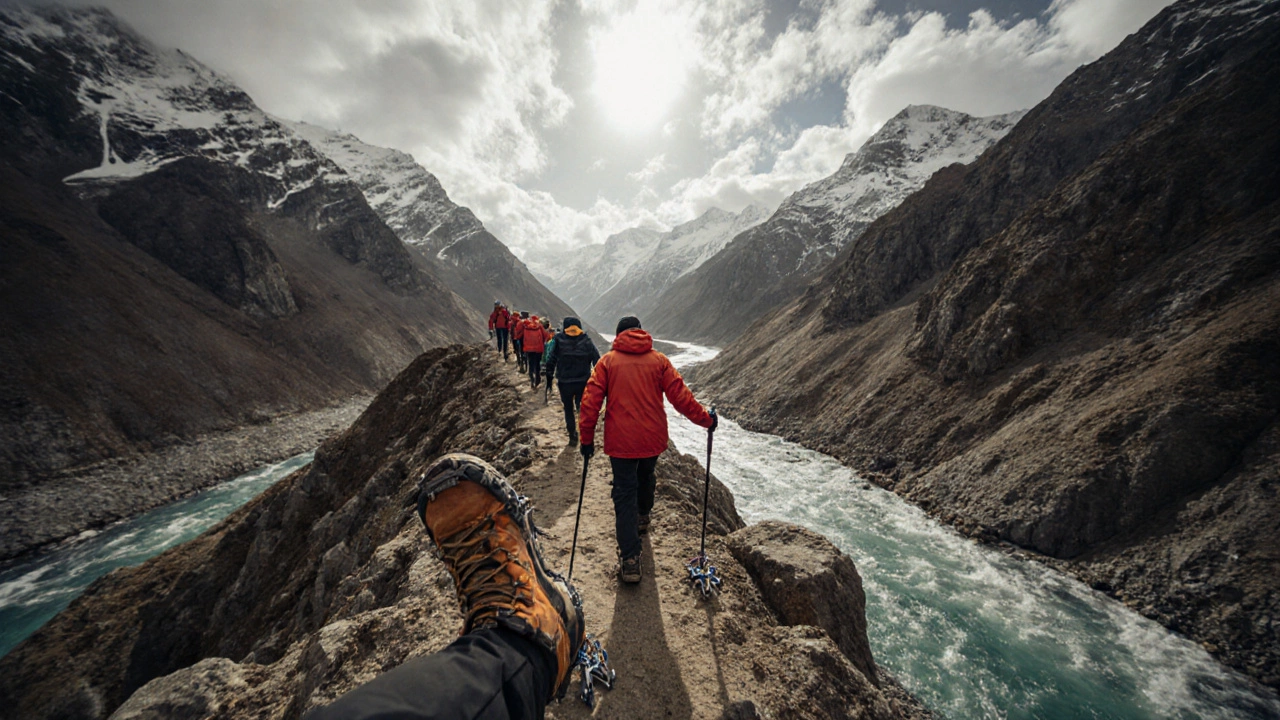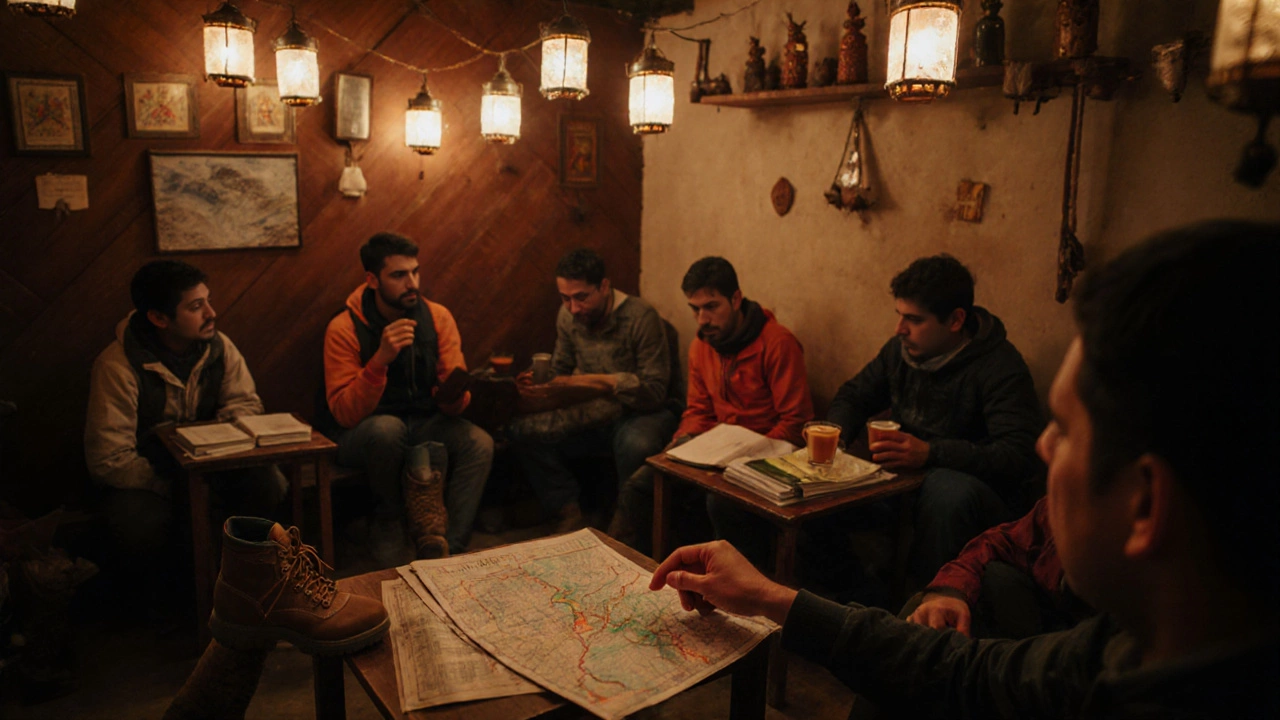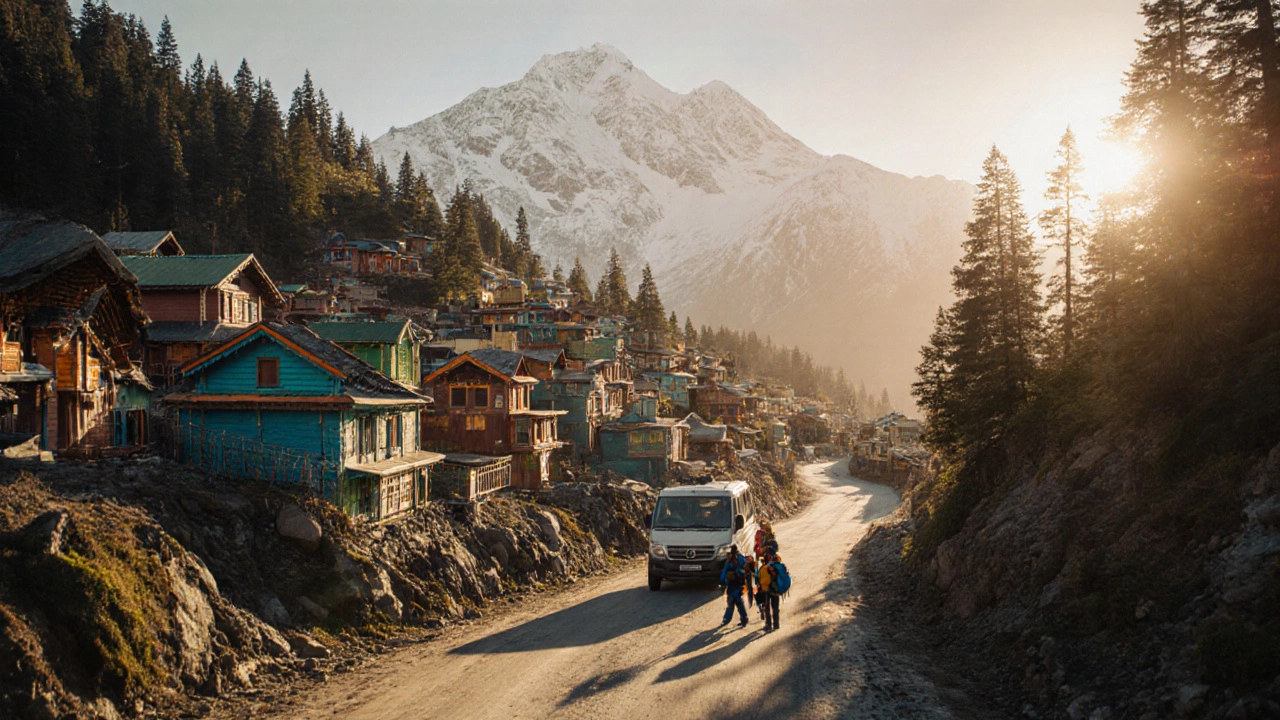Trek Recommendation Tool
Find Your Perfect Trek
Recommended Treks
Select your season and fitness level to see recommended treks.
Ever wondered which Indian town earns the nickname trekking capital India? The answer isn’t a hidden village in the Himalayas; it’s a bustling hill station that blends rugged trails with modern comforts, drawing both seasoned trekkers and first‑timers alike.
What defines a trekking capital?
A city earns the title when it meets three core criteria: a concentration of high‑quality trails, reliable infrastructure for adventure seekers, and a thriving community that supports guide services, gear shops, and seasonal events. In India, only a handful of places tick all these boxes, and among them, one stands out for sheer volume of routes and year‑round activity.
Manali: the trekking capital of India
When trekkers talk about the Manali is a hill station in Himachal Pradesh renowned for its high‑altitude trails and vibrant adventure scene, they’re referencing a town that sits at 2,050m above sea level, framed by snow‑capped peaks and pine forests. Its location in the Himachal Pradesh a north‑Indian state famous for mountain landscapes and cultural heritage gives it access to a diverse set of treks, from easy valley walks to multi‑day high passes.
Manali’s appeal starts with the Parvati Valley, a gateway to routes like Hampta Pass and Beas Kund. The town also serves as the launch point for the Spiti Valley circuit, a high‑desert trek that attracts photographers chasing surreal landscapes. Because the town hosts a range of budget hostels, mid‑range hotels, and luxury resorts, trekkers can choose accommodation that fits any wallet.
Seasonality and must‑do treks around Manali
Understanding the weather patterns is crucial. The best trekking window runs from lateMay to earlyOctober, when the snow has melted enough to open high passes but the monsoon rain hasn’t yet turned the trails into mud. Here’s a quick season guide:
- May‑June: Ideal for Hampta Pass (7‑8days) and Beehive Pass. Snow is still present at higher elevations, offering a touch of winter scenery.
- July‑August: Trails stay green, but occasional showers can make river crossings tricky. Beas Kund and Gulaba Bungee remain popular.
- September‑October: Clear skies and crisp air make the Spiti Valley circuit (10‑12days) especially rewarding.
For those short on time, the Solang Valley trek offers a day‑long hike to the summit with panoramic views of the Pir Panjal range. Meanwhile, the Dhungri Village trail provides a cultural immersion with visits to traditional Kinnaur villages.

Comparing India’s top trekking hubs
| Hub | Altitude (m) | Best Season | Flagship Treks | Typical Difficulty |
|---|---|---|---|---|
| Manali | 2,050 | May‑Oct | Hampta Pass, Spiti Valley | Moderate‑Hard |
| Leh‑Ladakh | 3,500 | June‑Sept | Markha Valley, Chadar Trek | Hard |
| Rishikesh | 372 | Oct‑May | Valley of Flowers, Har Ki Doon | Easy‑Moderate |
| Sikkim | 1,500‑4,500 | Apr‑Oct | Goecha La, Dzongri | Moderate‑Hard |
| Darjeeling | 2,134 | Nov‑Mar | Singalila Ridge, Sandakphu | Easy‑Moderate |
While each hub offers a unique flavor, Manali stands out for its blend of accessibility, trail variety, and supporting services-making it the most balanced choice for most trekkers.
Planning a trek from Manali: step‑by‑step
- Choose your trek. Decide based on fitness level, time available, and season. First‑timers often start with Hampta Pass, while seasoned hikers may opt for the Spiti Valley circuit.
- Secure permits. Most Himachal treks require a Forest Department permit. Most agencies in Manali handle this for a nominal fee; you can also obtain it online through the Himachal Pradesh Forest Department portal.
- Book a guide. Local guides know alternate routes, weather quirks, and safe river crossings. Look for certified guides with National Adventure Institute badges.
- Arrange gear. Pack layered clothing, a good sleeping bag (rated to -10°C), trekking poles, and a reliable water‑purification system. Many shops in Manali rent high‑altitude gear if you’re travelling light.
- Acclimatize. Spend at least 1‑2days in Manali before heading above 3,000m. Light walks around the town and early‑morning yoga sessions help the body adjust.
- Start early. Aim to begin each day’s trek before 7am to avoid afternoon heat and potential storms.
- Stay hydrated and fuel up. Carry 3‑4liters of water per day and snack on energy bars, dried fruits, and nuts.
- Practice Leave‑No‑Trace. Pack out all waste, respect local flora, and avoid building fire unless permitted.
Following these steps reduces risk and maximizes enjoyment, letting you focus on the breathtaking vistas rather than logistical headaches.

Tips, common pitfalls, and pro advice
- Don’t underestimate altitude. Even though Manali sits at 2,050m, many treks cross passes above 4,000m. Headaches, shortness of breath, and loss of appetite are early warning signs.
- Watch the weather forecast. The Himalayas can change in minutes. Subscribe to the Indian Meteorological Department alerts for real‑time updates.
- Carry a backup power source. Mobile networks are spotty in high passes; a portable solar charger keeps your GPS and emergency contacts alive.
- Respect local culture. Villages along the Parvati and Spiti routes are home to distinct Buddhist and Hindu communities. Dress modestly and ask permission before photographing homes.
- Plan for post‑trek recovery. After a multi‑day trek, give your body a couple of days in Manali to rest, stretch, and hydrate before jumping back to city life.
Frequently Asked Questions
When is the best time to trek from Manali?
Late May to early October offers clear trails, comfortable temperatures, and open high‑passes. July‑August may bring occasional showers, while November‑April can be too cold for most routes.
Do I need a permit for Hampta Pass?
Yes. The Forest Department of Himachal Pradesh issues a simple trekking permit. Most local agencies include the permit cost in their package, or you can obtain it online.
Is Manali suitable for beginners?
Absolutely. Trails like the Solang Valley day‑hike and the lower sections of Hampta Pass are moderate in difficulty and have plenty of support services.
What gear is essential for a high‑altitude trek?
Layered clothing, a down jacket, waterproof trekking shoes, a sleeping bag rated to at least -10°C, trekking poles, a headlamp, and a reliable water‑purification method are must‑haves.
Can I do a trek solo from Manali?
Solo trekking is possible, but beginners should join a group or hire a guide for safety, especially on high passes where weather changes fast.
Next steps for aspiring trekkers
Start by browsing the official Manali Tourism website for up‑to‑date trail conditions and accommodation listings. Then pick a trek that matches your fitness level, book a reputable guide, and pack smart. With the right preparation, you’ll experience why Manali truly holds the crown as India’s trekking capital.
